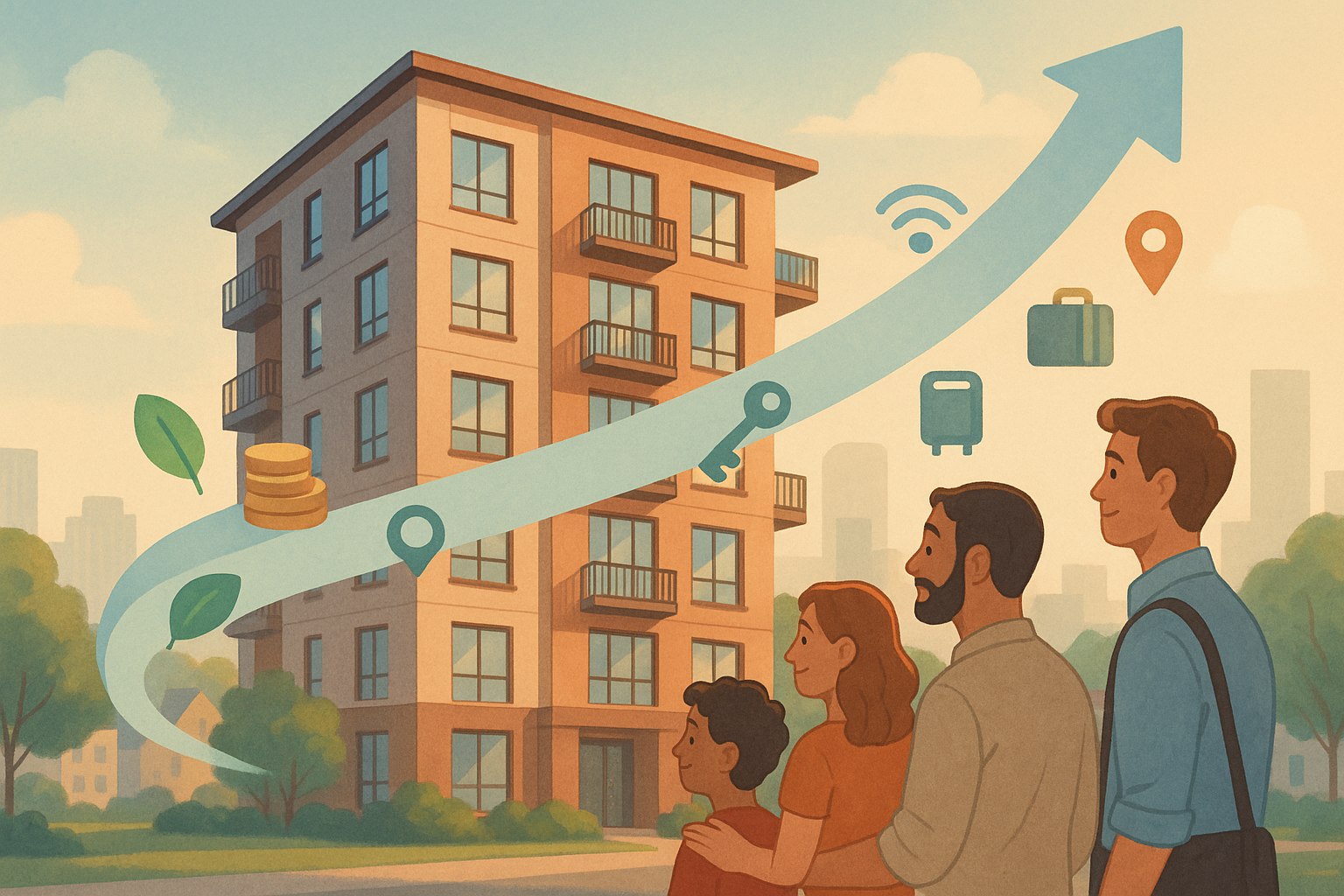National Apartment Occupancy Hits 95%
2014 YTD Rent Growth Strongest of Recovery
National apartment occupancy reached 95% for the first time in at least six years in May 2014, according to research from Axiometrics, the leader in apartment data and research.
Additionally, effective rent growth for the year to date ending in May was 3.7%, the highest growth since the trough of the recession. With both improving occupancy and rent growth despite increasing unit deliveries, the apartment market is performing at a very high level.
“Axiometrics began tracking apartment data on a monthly basis in April 2008, and this is the first time since then that occupancy has been 95%,” said Stephanie McCleskey, Axiometrics’ Director of Research. “We tracked quarterly before that, and the second quarter of 2001 was the last time the market was at 95% for a quarter. It’s a pleasant surprise because it’s coming at a time when new supply is flooding the market.”
According to Axiometrics’ recently released May 2014 Market Trends Report, May saw a 20 basis-point (bps) increase in occupancy from the 94.8% recorded in April 2014, also the previous monthly high. Occupancy was 94.8% in August and September 2013.
“The national occupancy rate has increased steadily each of the past four months and is higher than the 94.7% recorded in May 2013,” McCleskey added.
Based upon Axiometrics’ identified supply, about 180,000 new units have been delivered throughout the U.S. during the past 12 months, but with high absorption, the impact on effective rent growth and occupancy has been positive.
“One reason occupancy is rising is that not only are people moving into these new units, but they’re also moving into Class B units at a lower price point,” McCleskey said. “Most of the new units are priced competitively with Class A product, so about 80% of existing stock has lower rents than the newcomers, making them attractive to those who can’t afford the highest rents.”
Occupancy is improving in all three asset classes. Class A was 95.2% in May, up 0.2% from April. Class B improved by 0.3% to 95.4%, while Class C occupancy increased 0.2% to 94.2%.
The strong occupancy may also affect the annualized effective rent growth rate, which also continued trending upward; May’s 3.5% growth was the strongest in the 16 months since February 2013.
That rate represented a 10 bps increase from the April 2014 rate of 3.4% and a 19 bps increase from 3.3% in May 2013.
“The year-to-date (YTD) effective rent growth numbers portray an apartment market that may be having its strongest year since the Great Recession ended,” Axiometrics Vice President of Research Jay Denton said. “The May 2014 YTD rate of 3.7% was stronger than the 3.4% for all of 2011 and 2012, which had the next strongest first five months of the recovery. The 2014 YTD rate will have to exceed 4.2% in June to remain the strongest of the recovery years.”
Effective rent growth is on the rise in the top two asset classes. Class A properties — those with the top 20% highest rent — generated 3.5% annualized effective rent growth in May, up from 3.1% in April. Class B continues to have the strongest growth among the asset classes, at 3.9% in May, a 0.1% rise from April and its best since at least December 2012. Class C effective rent growth was 3.1% in May, a 0.5% decrease from the previous month.
“Since most of the new units being delivered are getting absorbed no one should be surprised that rents for Class A properties nationwide are rising,” Denton said. “And Class B is leading the other classes because people who can’t afford the high rents being asked at new properties are moving into these units. And while they might not have all the bells and whistles of the new units, many Class B properties are really a good buy for the price and quality.”
McCleskey adds,”With this month’s increase, Class A has fully recovered from a pronounced dip in which the rate of effective rent growth dropped from 3.5% in June 2013 to 2.1% in February 2014.”
Also, landlords are getting a higher percentage of asking rent. Concession values were at a post-recession low for the second straight month, decreasing slightly to 0.8% in May 2014 from 1.0% in April. Despite the drop, concessions are still equivalent to four days’ free rent on a 12-month lease.
Among individual markets:
The Odessa, TX, Metropolitan Statistical Area (MSA), a natural-gas-boom area, had the strongest annualized effective rent growth in the nation for the third straight month: 13.24%.
Washington, D.C., has ended its time swimming in the red. Effective rent growth of 0.3% marked the first time since June 2013 that rent growth was in positive territory in this MSA.
While the San Francisco Bay Area continues to be one of the hottest regions in the nation, the Oakland MSA is the strongest one in that region. Its 10.0% annualized effective rent growth is the sixth strongest in the nation, one place ahead of No. 7 San Jose, which has 8.7% effective rent growth.
Large markets above the national rate of 3.51% include:
Houston at 26th (5.35%)
Phoenix at 28th (4.82%)
Austin at 29th (4.78%)
Los Angeles at 42nd (4.04%)
Performing below the national rate are:
Dallas at 54th (3.36%)
Boston at 83rd (1.97%)
Chicago at 89th (1.67%)
New York at 90th (1.62%)
Philadelphia at 92nd (1.58%)
Washington at 110th (0.25%)
Though Axiometrics tracks more than 400 markets, the 121 largest are used for rankings.
Axiometrics improves property and portfolio performance for apartment investments. Confident investment decisions begin with reliable, timely information. No one has more accurate, detailed, and up-to-date research on the apartment and student housing markets. Learn more at www.axiometrics.com or by calling 214-953-2242.









